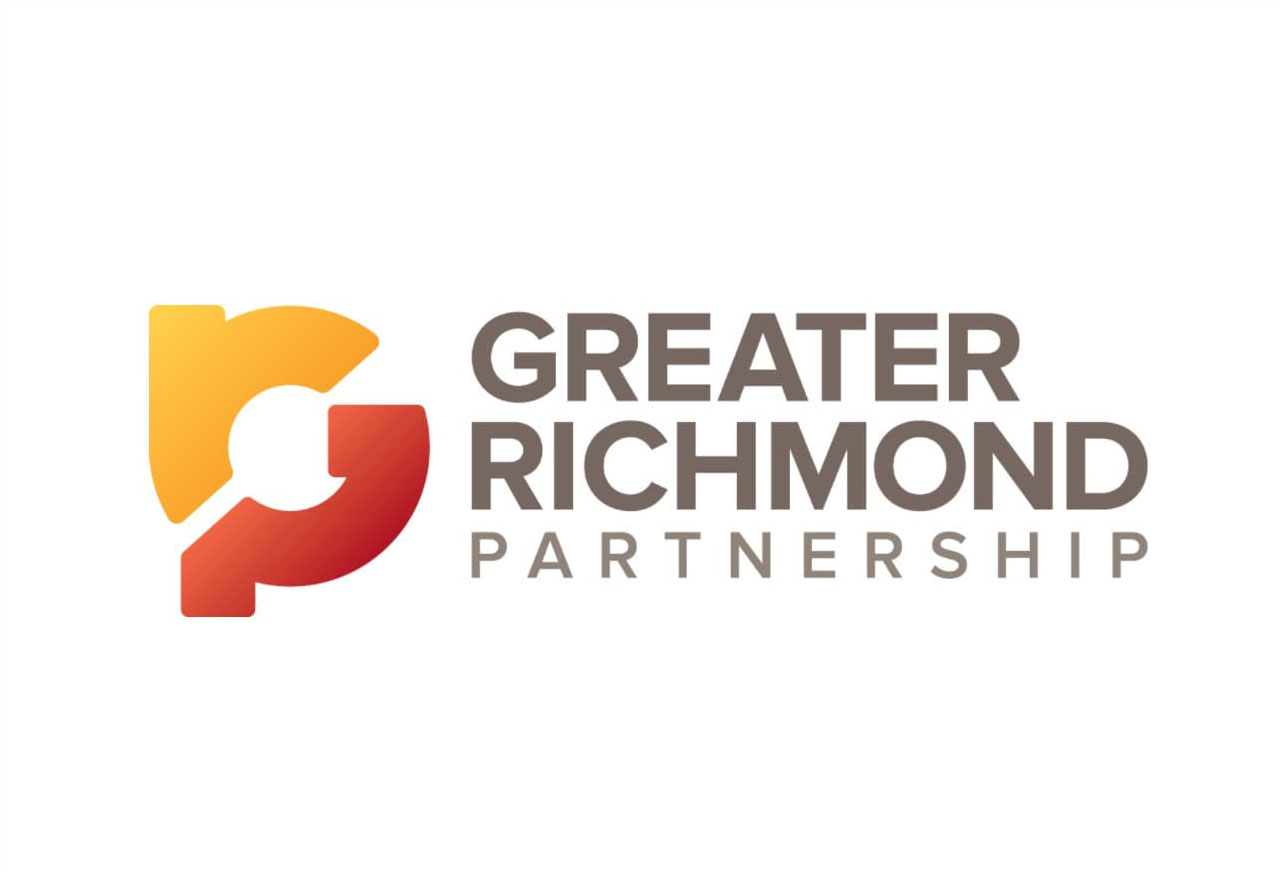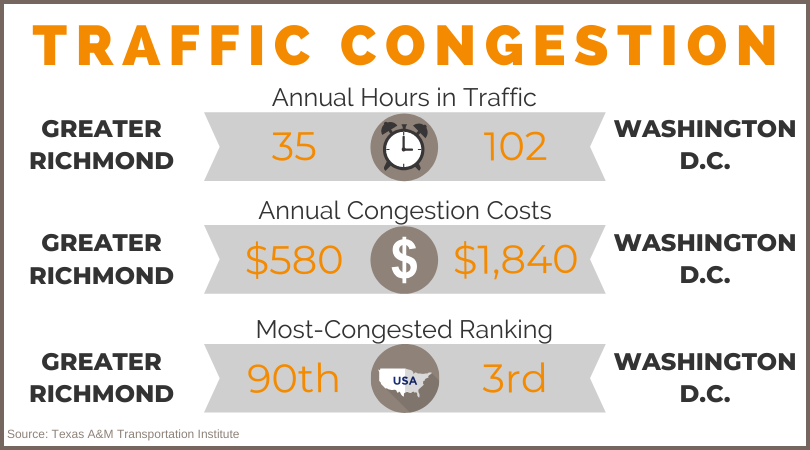
News
Blog | 3 min read
November 27, 2019

The Texas A&M Transportation Institute’s 2019 Urban Mobility Report highlights Greater Richmond, Va., remaining one of the nation’s least-congested large urban areas. The average commuter in Greater Richmond spends only 35 hours in traffic annually compared to the national average of 54 hours per year. Since 2014, the region has slightly increased from 34 to 35 hours per year in traffic and slid from the 77th most-congested area to the 90th.
According to CNBC, traffic congestion cost the nation $87 million in lost productivity in 2018, around $1,348 per driver. With Richmond commuters spending only 35 rather than 54 hours per year in traffic, drivers in the region are saving approximately $430 annually compared to the normal commuter. Congestion costs for the average commuter totals $1,010 yearly with the 101 largest metro area’s growing even higher at $1,210. Richmond’s traffic costs commuters in the region only $580, meaning that driving in Greater Richmond is nearly half the cost of the U.S. average. Local drivers save on gasoline related to the extra time spent in traffic, spending approximately 43% less than the nation’s average commuter.
 Richmond currently sits well below the national average for both annual traffic costs and hours spent in traffic. Unfortunately, Washington, D.C., doesn’t share this luxury. Time is money and Washington, D.C., drivers are losing immense amounts annually because the region is one of the nation’s top traffic congestion spots. Washington, D.C., commuters spend approximately 102 hours in traffic per year with costs reaching as high as $1,840, nearly double the national average. With Washington, D.C., ranked as the third most-congested large urban area, Richmond looks like the perfect place to do business since employees and delivery teams are spending less time and money sitting in traffic.
Richmond currently sits well below the national average for both annual traffic costs and hours spent in traffic. Unfortunately, Washington, D.C., doesn’t share this luxury. Time is money and Washington, D.C., drivers are losing immense amounts annually because the region is one of the nation’s top traffic congestion spots. Washington, D.C., commuters spend approximately 102 hours in traffic per year with costs reaching as high as $1,840, nearly double the national average. With Washington, D.C., ranked as the third most-congested large urban area, Richmond looks like the perfect place to do business since employees and delivery teams are spending less time and money sitting in traffic.
Greater Richmond’s access to Interstates 64, 85, and 95 provide the region with logistical advantages that enable firms to distribute products more quickly. In fact, Richmond is only a one day’s drive from 45% of the U.S. population – creating efficiency for supply chain operations.
In metro areas across the country, the number of additional hours commuters spend delayed in traffic increased by 29% between 2014 to 2017, from 42 hours in 2014 to 54 hours in 2017. Although Greater Richmond’s population is growing by 200 net new residents per week, the Texas A&M Transportation Institute’s Urban Mobility Report depicts that the region is expected to retain a slow growth of hours spent in delayed traffic. This forecast is due to the region’s access to multiple interstates, which has eased the flow of traffic throughout the area, creating substantially lower commute times. In conclusion, Greater Richmond drivers are saving money yearly due to lower traffic congestion, leading to lower congestion costs compared to both the U.S. average and Washington D.C.